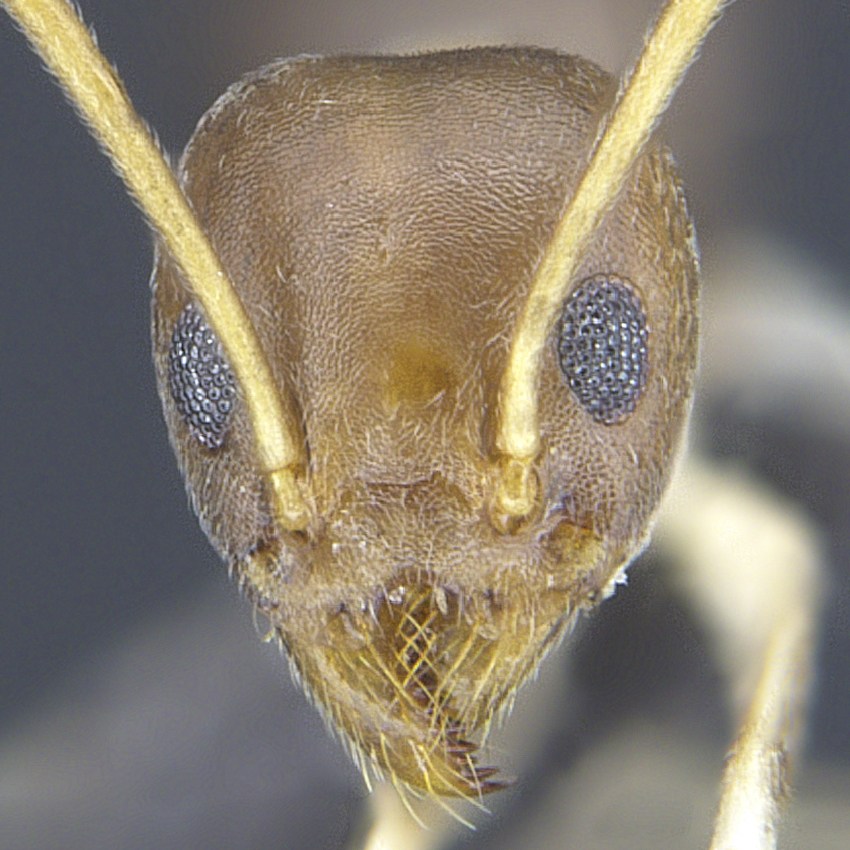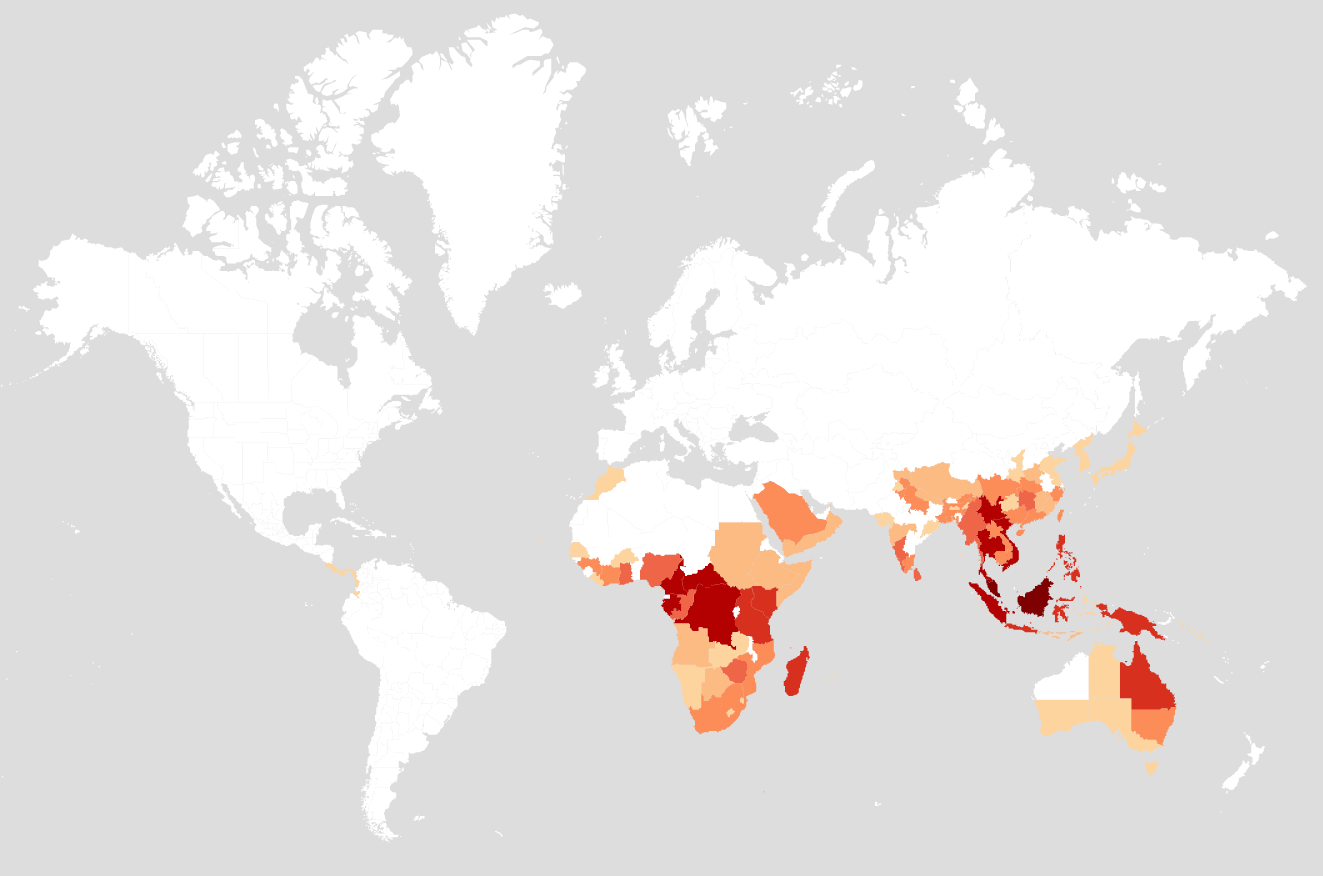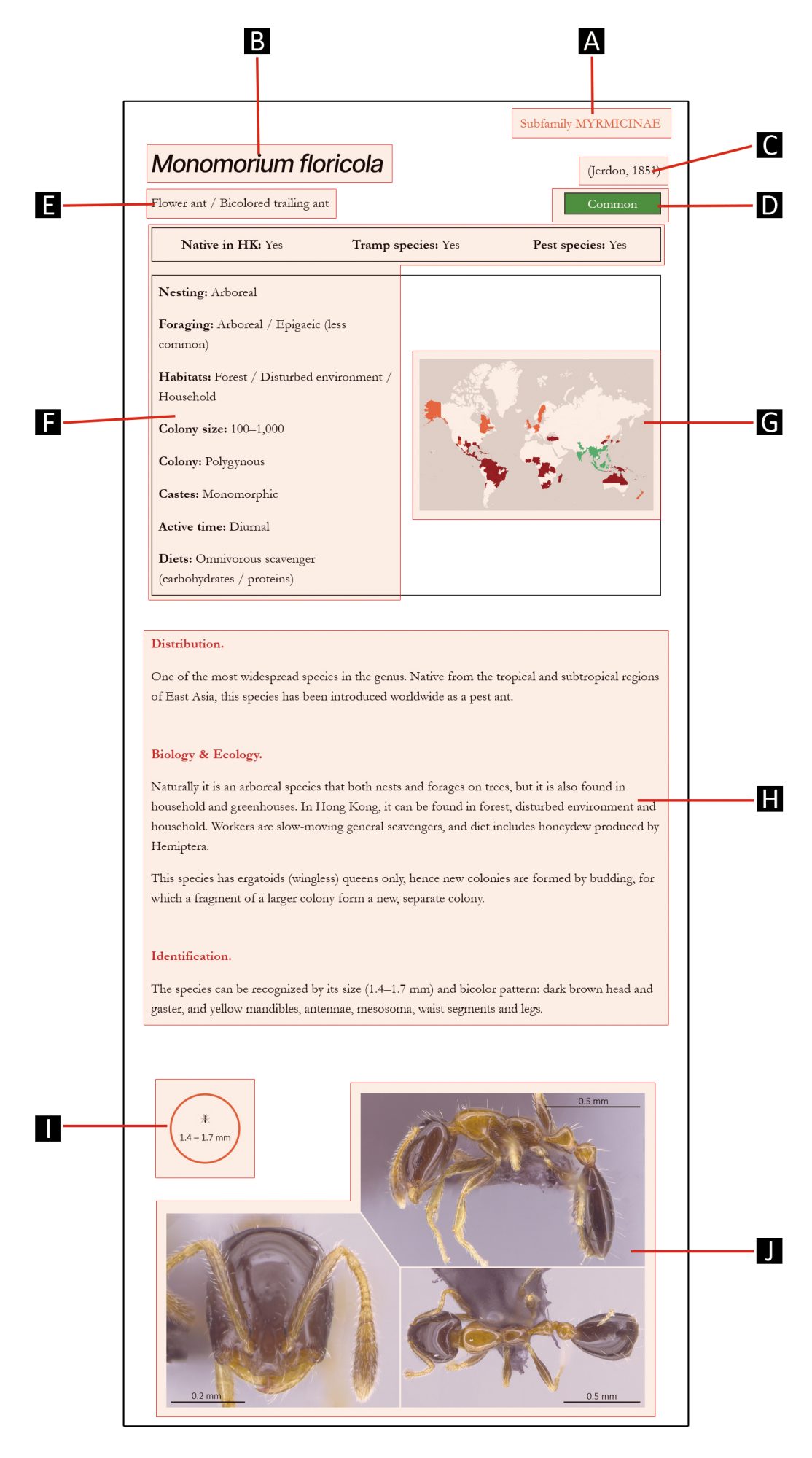
Subfamily DOLICHODERINAE
GENUS
Technomyrmex
Mayr, 1872
Distribution.
A moderate-sized ant genus with 94 species described. The genus has a widespread distribution in the tropical and subtropical regions of the Old World. Several species from the genus have been introduced worldwide as introduced species.
Biology & Ecology.
The majority of the species are arboreal ants that both nest and forage on trees or understory vegetation, while some species nest within the soil or leaf litter but also mainly forage on trees. They are usually not the most dominant ants in undisturbed, natural habitats, but may grow into massive colonies in plantations where they have been introduced. Nests usually contain several thousands of workers, and may contain up to several millions of workers in introduced regions.
Technomyrmex species are general scavengers, with a strong preference for honeydew produced by Hemiptera. Some species form mutualistic relationship with myrmecophyte plants, as they protect their host plants from herbivorous insects, while they are offered with nesting sites and food from the host plants in return.
Identification.
Technomyrmex species are small to medium in size (2–5 mm), mostly black in color, but some species have lighter coloration. They can be recognized by the absent of petiole (sometimes present but greatly reduced). They can be differentiated from Tapinoma, which also have reduced waist segment, by having all five gastral segments (gastral tergites) visible in dorsal view (the last segment sometimes only barely), while the fifth segment is bent downward in Tapinoma.

Species in this genus




